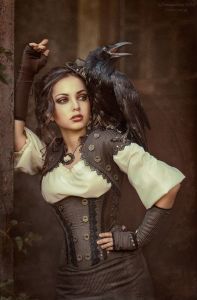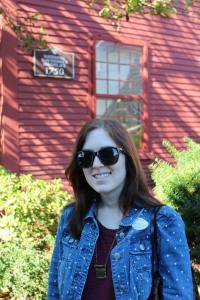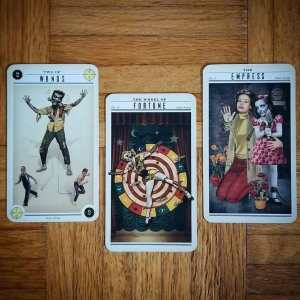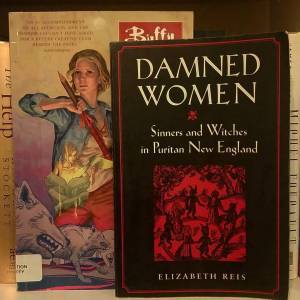FAQ: How do you research your novel?
Writing a novel involves much more than typing. First, you have to find inspiration about what to write. Then, you’ll need to conduct research for your novel or nonfiction book. That’s right. Unfortunately, fiction isn’t about just “making things up.”
The types and extent of research I do depends on the book I’m writing and the elements within the book. For each novel, I’ll look up information related to characters, settings, scenes/actions, and even the story’s genre. While there are millions of ways to do research for your book, these are some of my favorite, tried-and-true strategies.
Characters
If you’ve designed a well-rounded character, they’ll have several aspects to their physical appearance and personality. You can take some of these components from your life experience or other people you know. However, you’ll have to research some of them for your novel.
 For example, the protagonist of The Cogsmith’s Daughter (Desertera#1), Aya Cogsmith, is an early 20s heterosexual female. After her father’s death, she’s forced into prostitution, and eventually infiltrates noble society. She also has a knack for fixing mechanical devices.
For example, the protagonist of The Cogsmith’s Daughter (Desertera#1), Aya Cogsmith, is an early 20s heterosexual female. After her father’s death, she’s forced into prostitution, and eventually infiltrates noble society. She also has a knack for fixing mechanical devices.
When writing Aya, I already knew what it’s like to be an early 20s heterosexual female. I was one at the time. (As I write this, I’m in my late 20s.) However, I have never been a sex worker or lived in noble society, and I can’t fix gadgets. Therefore, I had to rely on research for these aspects of Aya’s character.
In university, I majored in Sociology, and my primary interests were gender, sexuality, and crime. I also worked as a peer educator for a sexual assault awareness program. So, I had a decent academic background on prostitution. In contrast, I invented most of the norms and conventions of Desertera’s noble society, relying on research into monarchical class systems, historical novels, and social theory to help structure it.
As for clockwork and steampunk gadgets, thank goodness for Wikipedia and the millions of “how things work” articles on the internet. Learn from my experience: if you give your character a hobby or vocation, you need to know enough to write about it!
For Aya’s appearance, I found a steampunk-style model on Pinterest to use as reference while writing. You can also use photographs of actors or other celebrities as models for your characters. Even better, try to find a role the actor has played that has similar traits to your character. The goal here is not to copy the actor or character’s personality, but to give yourself an easy reference for how your character looks and acts.
And yes, like many writers, I spend an embarrassing amount of time on baby name websites searching for symbolic names!
Setting
Setting is my favorite part of researching a novel. To write an effective setting, you’ll need to a firm grasp on time, location, population demographics, and culture. When writing a completely fictional setting (like Desertera), I try to model the society on various real settings (e.g. Victorian England, the Titanic, a desert). When writing in a real-world setting, as I am for my upcoming paranormal fantasy novel set in modern-day Salem, Massachusetts, I try to inject as much realism as possible, without sacrificing the story’s entertainment value.
 As you might expect, the best way to research a setting is to visit it in person. I’ve visited Salem, Massachusetts, twice and wrote about the best museums to visit and my favorite historical witch trial sites. Beyond going to the tourist sites, it’s also good to get a “local” perspective. I had a lovely, long conversation with two women who run a jewelry shop about what it’s like to live in a tourist town and New England in general.
As you might expect, the best way to research a setting is to visit it in person. I’ve visited Salem, Massachusetts, twice and wrote about the best museums to visit and my favorite historical witch trial sites. Beyond going to the tourist sites, it’s also good to get a “local” perspective. I had a lovely, long conversation with two women who run a jewelry shop about what it’s like to live in a tourist town and New England in general.
If you can’t visit a location (and/or your story is set in the past), research your novel setting via the internet. Get on Google Maps and take a “street view” tour of the city. Read travel blogs or watch YouTube videos to learn about other people’s experiences. Scour Wikipedia for those important population demographic details. Find a friendly person on social media who is willing to answer questions about their hometown.
Or, go old school and hit the books. No matter where or when your story takes place, there will be travel guides, memoirs, and academic texts that describe the setting, cultural norms, and most everything else you need to know.
But remember: if you’re writing fiction, your story’s version of that setting becomes fiction too. My Salem, Massachusetts, will look a lot like the real town … but I’ll also add in imagined places and change some things around. Sometimes, the feel of the place is just as (or more) important than sticking 100% with reality.
Scenes and Actions
 When you research your novel, learning how to describe key actions or events is very important. If your characters are going to take an action during a scene, you need to know enough about that action to make the scene realistic. (Or, you need to “cheat” it by telling the scene from the perspective of someone who doesn’t understand the action.)
When you research your novel, learning how to describe key actions or events is very important. If your characters are going to take an action during a scene, you need to know enough about that action to make the scene realistic. (Or, you need to “cheat” it by telling the scene from the perspective of someone who doesn’t understand the action.)
For example, the protagonist of my new paranormal fantasy novel is a psychic. Logically, psychic practices like tarot card readings, crystal ball scrying, and palm reading come up in the story. Therefore, I had to learn how these practices are performed so I could believably write my character doing them. As you can imagine, this was so much fun for me! I especially loved learning about tarot and continue to use Biddy Tarot as a resource for my personal tarot practice.
If you don’t know how to perform the action your characters are taking, you have lots of options for learning. Try experiencing the action for yourself (e.g. receiving or giving a psychic reading), reading internet articles or books on the action, watching instructional videos, or interviewing someone who knows how to do it. All of these tactics can help you write a realistic scene – and learn a new skill yourself!
Story Genre
 Because I want to make a living from my writing, I have to pay attention to genre conventions. Readers have certain expectations for the genres they enjoy, and the last thing I want to do is disappoint. As a lover of paranormal fantasy, I’ve been researching this genre my whole life by reading books and watching shows and movies in the genre. It makes me feel great about the hundreds of hours I’ve spent binging Buffy the Vampire Slayer!
Because I want to make a living from my writing, I have to pay attention to genre conventions. Readers have certain expectations for the genres they enjoy, and the last thing I want to do is disappoint. As a lover of paranormal fantasy, I’ve been researching this genre my whole life by reading books and watching shows and movies in the genre. It makes me feel great about the hundreds of hours I’ve spent binging Buffy the Vampire Slayer!
In addition to consuming paranormal fantasy, I’ve also paid attention to how these stories are presented. Most of them are written from first-person point-of-view (meaning the narrating character uses “I” and “we”). They often feature bad-ass women on the book covers (yes, please!) and come served with a side of steamy romance (Mmm…).
Learning about paranormal fantasy before I write it will result in a win-win for me and my readers. You’ll get to read the kind of stories you love, and I’ll get to write the kind of stories we both love. Perfect!
Conclusion
As you can see, there’s a lot to consider when you research your novel. Before the drafting process, I like to have as much information as possible about my characters, settings, important actions, and the genre itself. Doing this work beforehand helps me write more realistic and engaging stories, as well as prevents me from taking “research breaks” while writing.
Though, to be fair, I shouldn’t call this work. Book research allows me to meet new people, travel to fascinating places, and learn new things. It’s one of my favorite aspects of writing, and I can’t wait to share more of my research process with you!
If you’d like more “behind-the-scenes” looks into my book research as I do it, sign up for my Kate’s Coven email list. You’ll get a FREE story, plus weekly writing updates, exclusive content, and more.
Can you tell when a writer has done their book research? What kinds of characters, settings, and actions attract you to a novel? Let me know in the comments!
The post FAQ: How do you research your novel? appeared first on Kate M. Colby.



